As I strummed my final chord on the guitar, I never imagined the musical journey that awaited me. The familiar fretboard beneath my fingers would soon be replaced by a sea of black and white keys, each promising a new world of sound. Little did I know that my years of guitar expertise would become the foundation for an exhilarating piano adventure.
As a long-time editor of ‘Acoustic Guitar’ magazine, I’ve witnessed countless musicians embark on the guitar to piano transition. This fascinating shift has always intrigued me, and I’m thrilled to share my insights on this musical metamorphosis. Whether you’re a seasoned guitarist looking to expand your horizons or simply curious about the piano’s allure, this guide will illuminate the path from six strings to 88 keys. Join me as we explore how your guitar skills can be your secret weapon in conquering the piano, and discover the harmonious bridge between these two magnificent instruments.
Understanding the Basics
Comparing Guitar and Piano Layouts
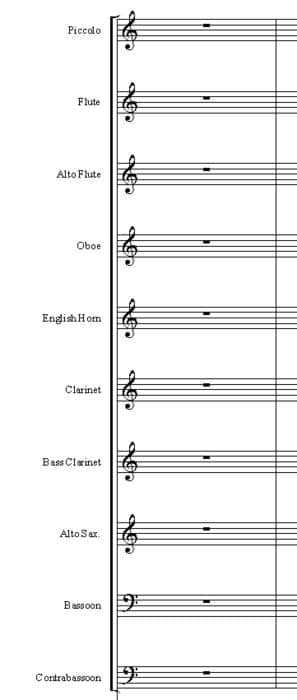
In my years of transcribing for ‘Premier Guitar’, I’ve gained a unique perspective on the layouts of both guitar and piano. The transition from guitar fretboard to piano keyboard is a fascinating journey of spatial recalibration. While the guitar’s layout is linear and repeating, the piano’s is a continuous spectrum of notes. This fundamental difference affects how we visualize and approach music on each instrument.
On a guitar, we think in patterns and shapes, with the same chord formations movable across the fretboard. The piano, however, requires a more linear thinking, with each key representing a specific note. Understanding this contrast is crucial for guitarists transitioning to piano, as it forms the foundation for adapting playing techniques and developing new muscle memory. This comparison not only aids in the transition but also deepens our overall musical understanding, bridging the gap between these two versatile instruments.
Note Mapping Between Instruments
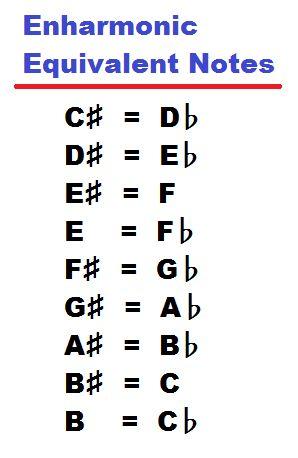
As we delve deeper into understanding the basics, let’s explore note mapping between instruments. My experience in engraving music has honed my ability to visualize note relationships across different instruments. When you translate guitar to piano, it’s crucial to recognize that while the notes are the same, their physical locations differ significantly. On a guitar, notes ascend linearly along the fretboard, whereas on a piano, they follow a repeating pattern across the keys. I’ve found that visualizing the guitar’s fretboard laid out horizontally can help bridge this gap. By mentally superimposing this image onto the piano keys, you can more easily locate corresponding notes. This skill is fundamental to your transition and will serve as the foundation for more complex techniques we’ll explore later, such as chord translation and adapting guitar solos to piano.
Translating Chords from Guitar to Piano
Basic Chord Structures
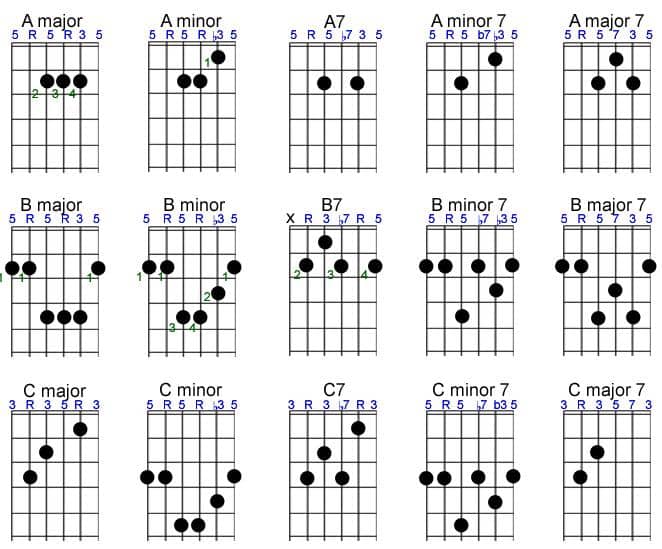
As I explain in my book ‘Color Your Chords’, understanding basic chord structures is crucial when transitioning from guitar to piano. While the instruments differ, the fundamental chord theory remains constant. When translating piano chords from guitar chords, it’s essential to recognize that a C major chord, for instance, consists of the same notes (C, E, G) on both instruments. However, the way we physically create these chords varies significantly.
On guitar, we often use open chords or barre chords, utilizing multiple strings. On piano, we typically play chords with individual fingers on specific keys. This difference in approach requires a mental shift, but the underlying harmonic principles remain unchanged. By focusing on the chord’s component notes rather than familiar fingerings, you’ll find that transitioning between instruments becomes more intuitive. This understanding forms the foundation for more complex chord progressions and voicings, which we’ll explore next.
Advanced Chord Progressions

As we delve deeper into chord translation from guitar to piano, let’s explore advanced chord progressions. Through my work on ‘Jim Hall: Signature Licks’, I’ve analyzed complex chord voicings that can elevate your piano playing. The key is understanding how these intricate progressions translate between instruments. For instance, a jazzy ii-V-I progression on guitar might use extended chords with alterations. On piano, we can expand this further, utilizing the instrument’s wider range to create lush, full-bodied harmonies.
I’ll show you how to take a guitar’s compact chord shapes and spread them across the keyboard, maintaining the progression’s essence while exploiting the piano’s unique strengths. We’ll explore techniques like voice leading and chord substitutions, which are crucial for seamless transitions between chords. By mastering these advanced concepts, you’ll not only translate guitar progressions but also enhance them, adding depth and richness to your piano arrangements.
Adapting Playing Techniques
Fingering and Hand Positioning
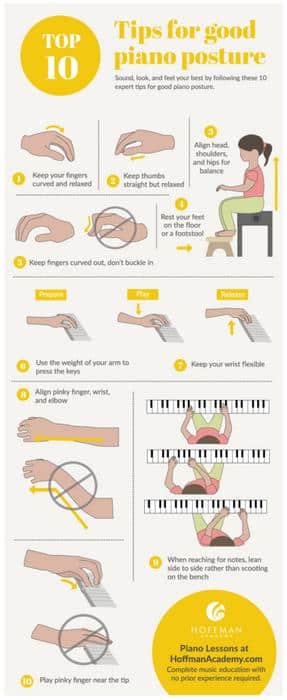
As a guitarist transitioning to piano, I found fingering and hand positioning to be crucial yet challenging aspects. Unlike guitar, where my fingers often stayed in one position, piano required a more dynamic approach. I learned that proper hand placement is essential for fluid movement across the keys. Initially, I struggled with the piano’s wider range, but I developed a technique of visualizing the keyboard in sections, similar to guitar fretboard positions.
I discovered that finger independence was key. Exercises focusing on individual finger strength and dexterity greatly improved my playing. As a beginner piano player with a guitar background, I found it helpful to start with simple chord progressions, gradually increasing complexity. This approach allowed me to adapt my guitar fingering knowledge while developing new piano-specific techniques, ultimately enhancing my overall musicianship and versatility across both instruments.
Strumming vs. Key Striking
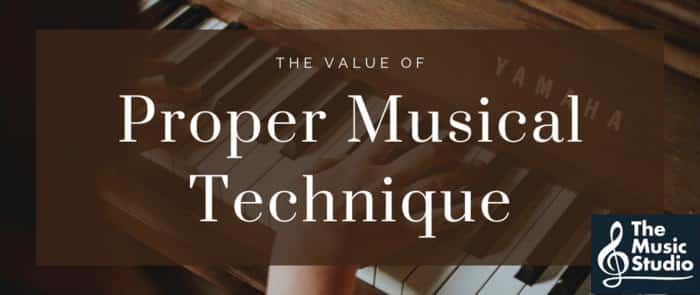
As I transitioned from guitar to piano, I quickly realized that strumming and key striking are fundamentally different approaches to sound production. While guitarists use a sweeping motion across strings, pianists employ a more precise, vertical action. This shift requires a mental and physical adjustment. I found that visualizing each key as a separate string helped me adapt my technique. Instead of thinking about strumming patterns, I focused on individual finger movements and timing.
To bridge this gap, I developed exercises that mimic strumming patterns on the piano. For instance, I would play arpeggios with a slight rhythmic emphasis, reminiscent of guitar strumming. This approach helped me maintain the rhythmic sensibilities I’d developed as a guitarist while adapting to the piano’s unique requirements. Understanding this difference is crucial for guitarists learning piano, as it forms the foundation for developing proper touch and expressiveness on the keys.
Learning Scales and Melodies
Transferring Scale Knowledge
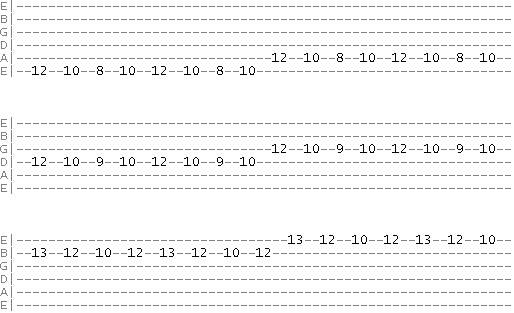
When transferring scale knowledge from guitar to piano, I’ve found that the underlying theory remains constant, but the application differs significantly. My experience writing instructional books has taught me that visualizing scales on a piano keyboard can be more intuitive than on a guitar fretboard. The linear layout of piano keys makes it easier to see whole and half steps, which is crucial for guitar to piano conversion. I always emphasize to my students that understanding the intervallic relationships within scales is key. This knowledge transcends instruments, allowing for a smoother transition. By focusing on these relationships rather than memorizing patterns, you’ll develop a deeper understanding of music theory that applies to both instruments. This approach not only facilitates the transition but also enhances your overall musicianship, opening doors to more creative expression on the piano.
Adapting Guitar Solos to Piano

As a guitarist transitioning to piano, adapting guitar solos to piano is a crucial skill that bridges the gap between the two instruments. Through my work on ‘Jim Hall: Signature Licks’, I’ve analyzed countless guitar solos, and I’ll guide you in translating these ideas to piano. When converting guitar music to piano, focus on capturing the essence of the solo rather than a note-for-note transcription. Pay attention to the phrasing, rhythm, and melodic contours. Experiment with using both hands to recreate the fluidity of guitar bends and slides. Utilize the piano’s wider range to add depth to single-note guitar lines. Remember, the goal is to maintain the solo’s character while embracing the piano’s unique capabilities. This process not only enhances your understanding of both instruments but also cultivates creativity in your musical expression.
Practice Strategies for Transition
Daily Exercises for Skill Transfer

In my experience crafting practice routines for guitar to piano transition, I’ve found that daily exercises are crucial for effective skill transfer. I recommend starting each practice session with a five-minute warm-up that alternates between familiar guitar patterns and their piano equivalents. This primes your brain for the upcoming transition work. Next, spend ten minutes on chord voicing exercises, focusing on translating open guitar chords to piano inversions. I’ve observed that this significantly accelerates the learning curve.
Follow this with scale practice, applying guitar fingering patterns to piano keys. This not only improves dexterity but also reinforces the spatial relationship between the instruments. Finally, dedicate time to sight-reading simple melodies, gradually increasing complexity. This approach, honed through years of developing instructional materials, ensures a holistic skill transfer that builds upon your existing musical foundation.
Recommended Learning Resources

As an editor and author who’s reviewed countless learning resources, I’ve curated a list of top-notch materials for beginner piano for guitar players. My journey has led me to discover resources that specifically cater to guitarists transitioning to piano, bridging the gap between these instruments. Online platforms like Pianote and Playground Sessions offer tailored courses that leverage your existing musical knowledge. I’ve found that method books such as “Piano for the Developing Musician” provide a solid foundation while acknowledging your guitar background. For a more interactive approach, apps like Simply Piano and Flowkey have proven invalient in my research, offering real-time feedback and adaptive lessons. These resources not only teach piano skills but also help you draw parallels between guitar and piano, making the transition smoother and more intuitive.
Applying Guitar Techniques to Piano
Recreating Guitar Effects on Piano
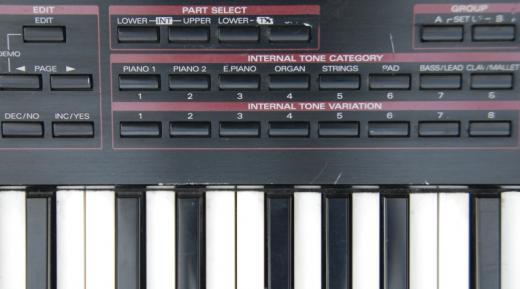
As a guitarist transitioning to piano, I’ve found that recreating guitar effects on piano is both challenging and rewarding. My experience writing for Premier Guitar has given me unique insights into emulating guitar sounds on piano. For instance, to mimic distortion, I use closely spaced notes in the lower register, creating a rich, harmonically complex sound. Reverb can be simulated by sustaining notes with the pedal, while delay effects are achieved by repeating phrases with slight timing variations. To recreate a wah-wah effect, I use a combination of volume swells and pitch bends. These techniques not only expand your piano repertoire but also help maintain your connection to guitar-based music. By understanding the essence of these effects, you’ll develop a more versatile approach to piano playing, bridging the gap between the two instruments.
Combining Guitar and Piano Skills

As a guitarist transitioning to piano, I’ve discovered that combining guitar and piano skills opens up a world of musical possibilities. Through my interviews with multi-instrumentalists for ‘Acoustic Guitar’, I’ve gathered valuable insights on blending these instruments. Playing guitar and piano simultaneously enhances your understanding of harmony, rhythm, and composition. It’s fascinating how guitar techniques like fingerpicking patterns can be adapted to create unique piano arpeggios, while piano chord voicings can inspire fresh guitar arrangements.
This cross-pollination of skills not only broadens your musical vocabulary but also deepens your appreciation for each instrument’s strengths. By applying guitar-centric approaches to piano playing, you’ll develop a distinctive style that sets you apart from traditional pianists. Moreover, this versatility is invaluable in collaborative settings, allowing you to seamlessly switch between instruments or combine them for a fuller, more textured sound in your performances and compositions.
FAQs
What are the main differences between guitar and piano?
The main differences include:
- Playing position: Guitar is typically played while sitting or standing, while piano is played seated.
- Sound production: Guitars produce sound through vibrating strings, pianos through hammers striking strings.
- Range: Pianos have a wider range of notes compared to guitars.
- Polyphony: Pianos allow for easier playing of complex chords and melodies simultaneously.
How long does it typically take to transition from guitar to piano?
The time it takes to transition from guitar to piano varies depending on individual factors such as practice time, musical background, and natural aptitude. However, most guitarists can expect to gain basic proficiency on the piano within 3-6 months of consistent practice. Mastery of the instrument can take years, just as with any instrument.
What skills from guitar playing can transfer to piano?
Several skills from guitar playing can transfer to piano:
- Understanding of music theory and chord structures
- Rhythm and timing
- Ear training and pitch recognition
- Finger dexterity and coordination
- Reading sheet music (if learned on guitar)
What are some challenges when transitioning from guitar to piano?
Some common challenges include:
- Adapting to a new playing position and posture
- Learning to use both hands independently
- Reading bass and treble clefs simultaneously
- Adjusting to the different way chords are formed and played
- Developing proper finger technique for piano keys
What practice techniques are effective for transitioning from guitar to piano?
Effective practice techniques include:
- Start with simple exercises focusing on hand independence
- Practice scales and arpeggios to build finger strength and dexterity
- Work on sight-reading skills for both clefs
- Learn to play familiar songs from your guitar repertoire on piano
- Use online resources and video tutorials for guided learning
- Consider taking piano lessons to ensure proper technique
Conclusion
Ready to embark on your guitar-to-piano adventure? Remember, every great musician started exactly where you are now. Let’s take that first step together. As we’ve explored throughout this guide, the guitar to piano transition is a journey of discovery and growth. From understanding the basic layout differences to translating chords and adapting playing techniques, each step brings you closer to mastering both instruments.
As someone who’s dedicated their career to understanding and teaching guitar, I’m thrilled to guide you on this journey to piano. Remember, every new skill enriches your musical palette. The strategies and exercises we’ve discussed will help you bridge the gap between these two beautiful instruments. Embrace the challenge, practice consistently, and soon you’ll find yourself fluent in both guitar and piano languages. This transition isn’t just about learning a new instrument; it’s about expanding your musical horizons and becoming a more versatile musician. Your guitar skills are the foundation—now let’s build upon them to create something truly extraordinary on the piano.